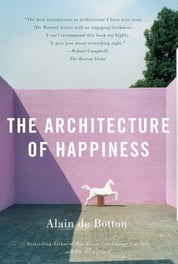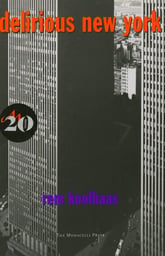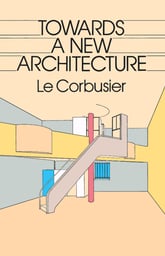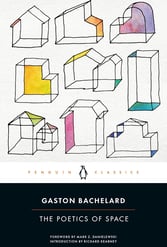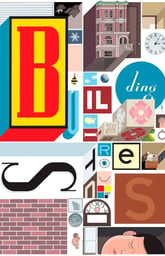5 Books Every Architecture Student Should Read
Coming up with new design ideas every semester that will really impress your professor can be a challenge. I know I’ve spent hours scrolling through Pinterest, mesmerized by all those amazing projects, and sometimes I catch myself thinking it might be easier to just copy them. If you’re anything like me, there are moments when you feel like you’re running out of ideas and creativity. That’s when I found it really helpful to dive into some books. It’s honestly so inspiring to read about a project and truly understand the vision behind it—not just admire the pretty pictures. It’s helped me think more deeply about my own designs and reignited my passion for architecture in ways I didn’t expect.
ARCHITECTURE
Sofia
11/9/20244 min read
1. "The Architecture of Happiness" by Alain de Botton
This book might not be your typical architecture textbook, but it was one of the most transformative reads of my journey. Alain de Botton explores the connection between architecture and human emotions. He argues that buildings are not just functional or aesthetic—they profoundly affect how we feel and live. I found it to be an eye-opening exploration of how architecture intersects with philosophy and psychology.
De Botton’s writing encourages you to look at buildings not just as physical structures but as emotional spaces that shape the human experience. It made me more aware of the intangible qualities that design can evoke, something I find myself constantly thinking about in my projects now.


Architecture isn’t just about buildings; it’s about creating spaces that shape and reflect our emotions and well-being.
2."Delirious New York" by Rem Koolhaas
was one of those books that completely shifted my perspective on architecture. As an architecture student, I often found myself stuck in the technicalities and aesthetics of design, but this book made me realize that architecture is also about the cultural and social forces that shape it. Koolhaas takes you on a journey through New York City, exploring how its iconic skyscrapers, grid systems, and public spaces came to be—often in ways that were chaotic, messy, and unexpected.
New York’s architecture isn’t just about design; it’s a product of chaos, ambition, and experimentation—and that’s what makes it so dynamic and exciting.
3. "Towards a New Architecture" by Le Corbusier
If you’re studying architecture, there’s no way to avoid Le Corbusier’s groundbreaking manifesto. Written in the early 20th century, this book outlines his vision for modern architecture and urban planning. While his ideas have sparked controversy over the years, there's no denying that his work has been instrumental in shaping the way we think about architecture.
Why you should read it: Le Corbusier’s bold ideas about functionality, minimalism, and the use of industrial materials are still incredibly influential in architectural thought. I found the book challenging yet inspiring, as it pushed me to think about how form follows function, and how new materials can create more efficient, beautiful spaces. Even if you don’t agree with all his ideas, this book will inspire you to think critically about the evolution of architecture.
Functionality and modern materials should drive architectural design, not just ornamentation or tradition.
4. The Atlas Six by Olivie Blake
This book is pure, unfiltered power. Imagine a secret society that guards the Library of Alexandria, but only a select few can gain entry each year. It’s dark, magical, and filled with characters who have about as much moral integrity as a snake. I couldn’t put it down. Every character is deliciously complex, and you’ll switch favorites at least five times (trust me, I did).
Our personal experiences of space are deeply tied to our emotions and memories, influencing how we connect with the built environment.
5. "Building Stories" by Chris Ware
This graphic novel is a bit of an outlier on this list, but it’s one that every architecture student should read—especially if you enjoy storytelling through visuals. "Building Stories" is an exploration of a single building and the lives of the people who occupy it, told through a series of intricate illustrations and narratives. It’s a masterful work that combines architecture, human experience, and storytelling in ways that I found deeply resonant.
The novel highlights the human side of design in a unique way. It reminded me of the most important aspect of planning - the user.
Architecture is more than just the physical structure—it’s about how spaces shape the lives and stories of the people who inhabit them.
I highly recommend reading these books—they’ve made me more thoughtful and reflective about every aspect of design, and I’m confident they’ll inspire you as much as they inspired me.

